Kilian Müller
No Time Like the Present: Effects of Language Change on Automated Comment Moderation
Jul 08, 2022

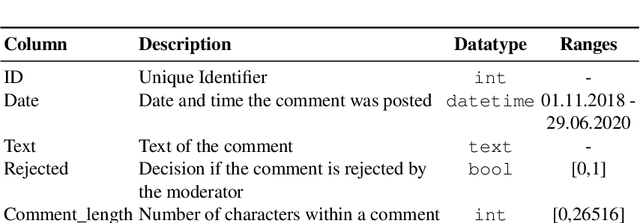
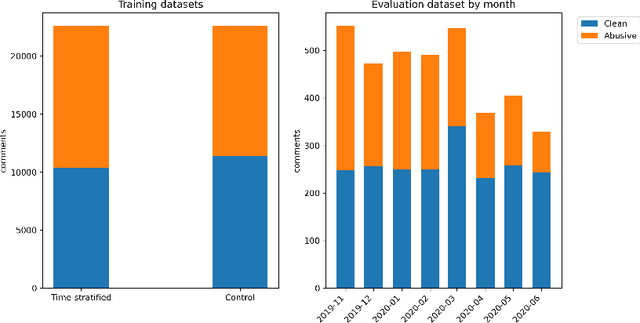
Abstract:The spread of online hate has become a significant problem for newspapers that host comment sections. As a result, there is growing interest in using machine learning and natural language processing for (semi-) automated abusive language detection to avoid manual comment moderation costs or having to shut down comment sections altogether. However, much of the past work on abusive language detection assumes that classifiers operate in a static language environment, despite language and news being in a state of constant flux. In this paper, we show using a new German newspaper comments dataset that the classifiers trained with naive ML techniques like a random-test train split will underperform on future data, and that a time stratified evaluation split is more appropriate. We also show that classifier performance rapidly degrades when evaluated on data from a different period than the training data. Our findings suggest that it is necessary to consider the temporal dynamics of language when developing an abusive language detection system or risk deploying a model that will quickly become defunct.
* Published in proceedings of the 2022 IEEE 24th Conference on Business Informatics (CBI), Amsterdam, Netherlands. 17 pages, 4 figures
Photonic co-processors in HPC: using LightOn OPUs for Randomized Numerical Linear Algebra
May 07, 2021
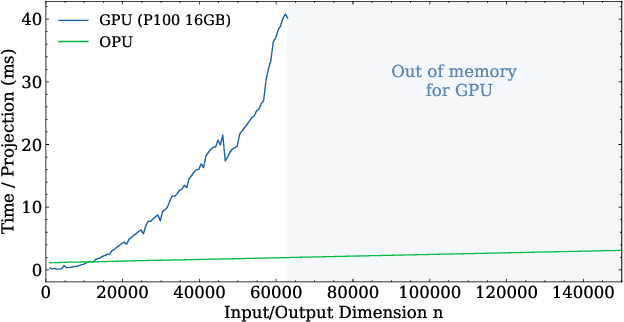
Abstract:Randomized Numerical Linear Algebra (RandNLA) is a powerful class of methods, widely used in High Performance Computing (HPC). RandNLA provides approximate solutions to linear algebra functions applied to large signals, at reduced computational costs. However, the randomization step for dimensionality reduction may itself become the computational bottleneck on traditional hardware. Leveraging near constant-time linear random projections delivered by LightOn Optical Processing Units we show that randomization can be significantly accelerated, at negligible precision loss, in a wide range of important RandNLA algorithms, such as RandSVD or trace estimators.
Hardware Beyond Backpropagation: a Photonic Co-Processor for Direct Feedback Alignment
Dec 11, 2020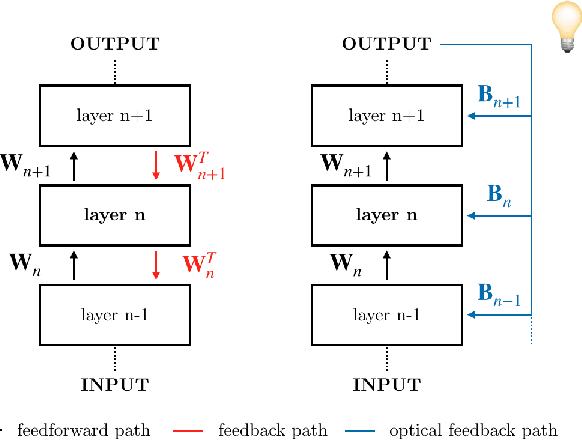


Abstract:The scaling hypothesis motivates the expansion of models past trillions of parameters as a path towards better performance. Recent significant developments, such as GPT-3, have been driven by this conjecture. However, as models scale-up, training them efficiently with backpropagation becomes difficult. Because model, pipeline, and data parallelism distribute parameters and gradients over compute nodes, communication is challenging to orchestrate: this is a bottleneck to further scaling. In this work, we argue that alternative training methods can mitigate these issues, and can inform the design of extreme-scale training hardware. Indeed, using a synaptically asymmetric method with a parallelizable backward pass, such as Direct Feedback Alignement, communication needs are drastically reduced. We present a photonic accelerator for Direct Feedback Alignment, able to compute random projections with trillions of parameters. We demonstrate our system on benchmark tasks, using both fully-connected and graph convolutional networks. Our hardware is the first architecture-agnostic photonic co-processor for training neural networks. This is a significant step towards building scalable hardware, able to go beyond backpropagation, and opening new avenues for deep learning.
Light-in-the-loop: using a photonics co-processor for scalable training of neural networks
Jun 03, 2020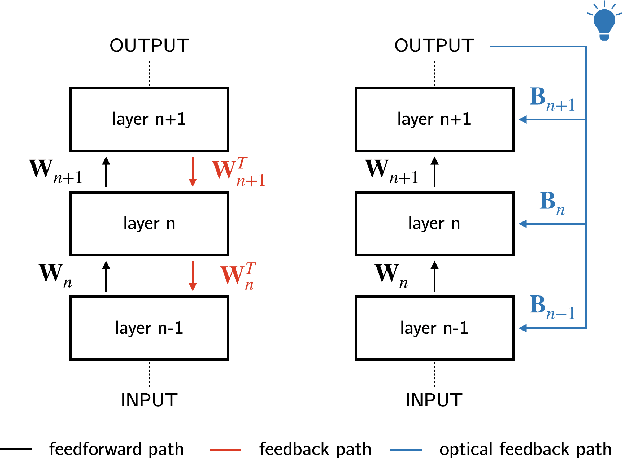
Abstract:As neural networks grow larger and more complex and data-hungry, training costs are skyrocketing. Especially when lifelong learning is necessary, such as in recommender systems or self-driving cars, this might soon become unsustainable. In this study, we present the first optical co-processor able to accelerate the training phase of digitally-implemented neural networks. We rely on direct feedback alignment as an alternative to backpropagation, and perform the error projection step optically. Leveraging the optical random projections delivered by our co-processor, we demonstrate its use to train a neural network for handwritten digits recognition.
 Add to Chrome
Add to Chrome Add to Firefox
Add to Firefox Add to Edge
Add to Edge